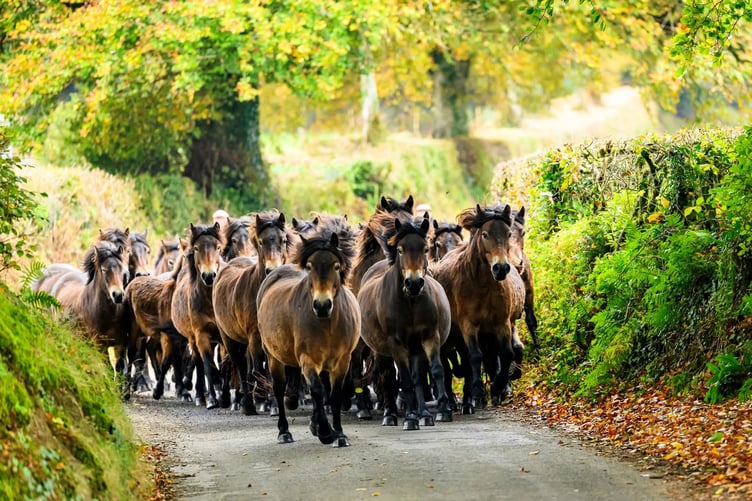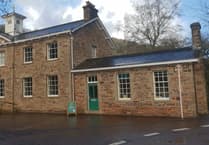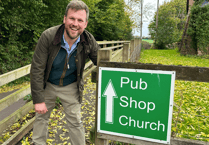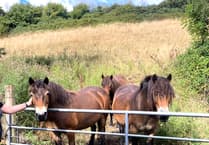ONE of Exmoor’s iconic sights could be seen when ponies of the moor’s Anchor herd were rounded up on Winsford Hill for their annual gathering by herd owners David and Emma Wallace.
All ponies on the moor are owned and not wild as many people believe. The Anchor herd, for example, lives wild and the ponies were gathered together using family and friends on horseback and quad bikes as part of an annual ritual, and taken for inspection to the family farm.
Safety vehicles warned passing traffic as dozens of ponies and foals were herded from a wide area of moorland.
Pony experts say the gatherings have an important purpose. The crop of foals that were born in the spring were separated from their mares and inspected by Exmoor Pony Society, one at a time.
They were then microchipped by a vet for identity, and the mares given a health check. A detailed headcount was made, because one colt foal that’s left out could have a significant breeding impact in the future.
The aim for the foals is to identify whether they are suitable to join the free-living herd or to be sold on for other purposes, such as future ridding ponies or into conservation grazing.
Foals that meet the breed standard can be entered in the Exmoor pony studbook, which is maintained by Exmoor Pony Society.
David Wallace is a trustee and chair of the Exmoor Pony Society, and the ponies have been under the ownership the Wallace family since 1947. The herd was established in the 19th century and ponies first registered in 1921, the year that the Exmoor pony Society was established.
David Wallace said: “The Exmoor pony is Britain’s oldest native breed and while their numbers have grown steadily and are carefully managed, they were once close to extinction.
“The Second World War had a huge impact on Exmoor ponies, and only 50 survived. This had an almost catastrophic effect on their bloodlines, with many being lost forever.
“This put the pony at risk, and even today it’s a breed that is classed as ‘Priority’ by the Rare Breeds Survival Trust - which essentially means it is endangered. This is where dedicated management of breeding and the stud book becomes so important.”
Today more than 500 registered ponies in 21 free-living herds can be seen in the Exmoor National Park. And the park also owns a herd. A further 3,500 registered ponies are located across the UK and abroad both in domesticated and free-living environments.
David Wallace added: “Owners and breeders need to manage how many foals are born, because there is a limited market for ponies, especially colts.
“It’s a delicate balance and we typically register fewer than 200 foals every year. When bloodstock and genetics are managed correctly we will be able to preserve the genetic pool of the Exmoor pony and increase its diversity.”
The Anchor gathering is one of several that will take place for Exmoor’s herds during October.

-receives-a-bone-shaped-box-filled-with-t.jpeg?width=209&height=140&crop=209:145,smart&quality=75)



Comments
This article has no comments yet. Be the first to leave a comment.